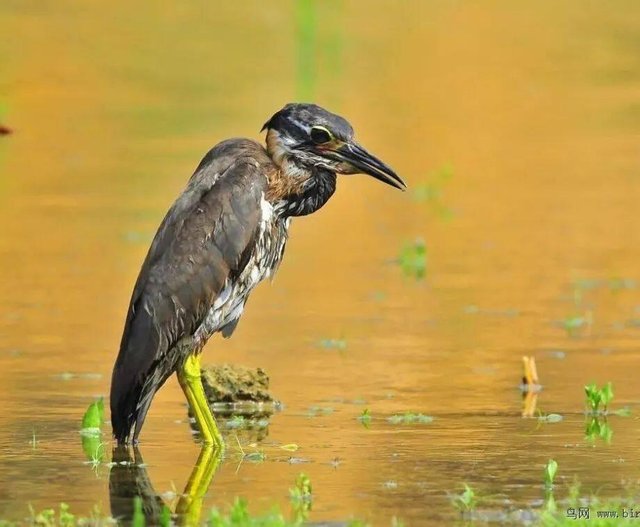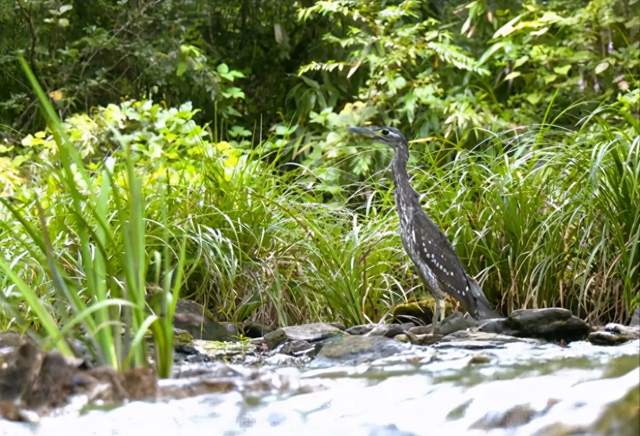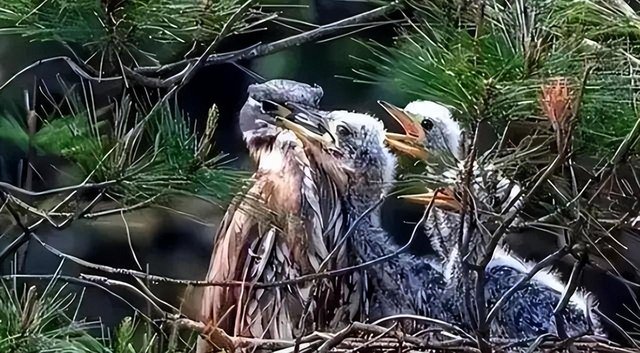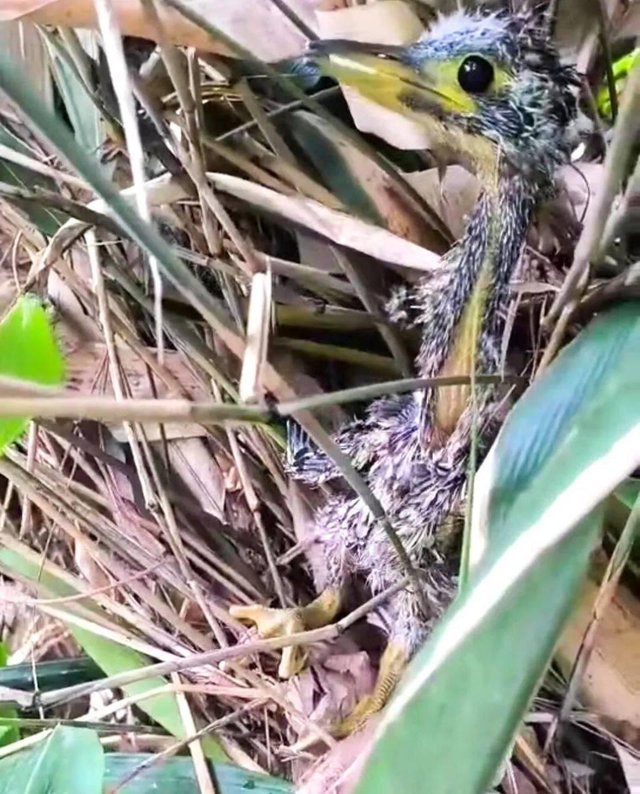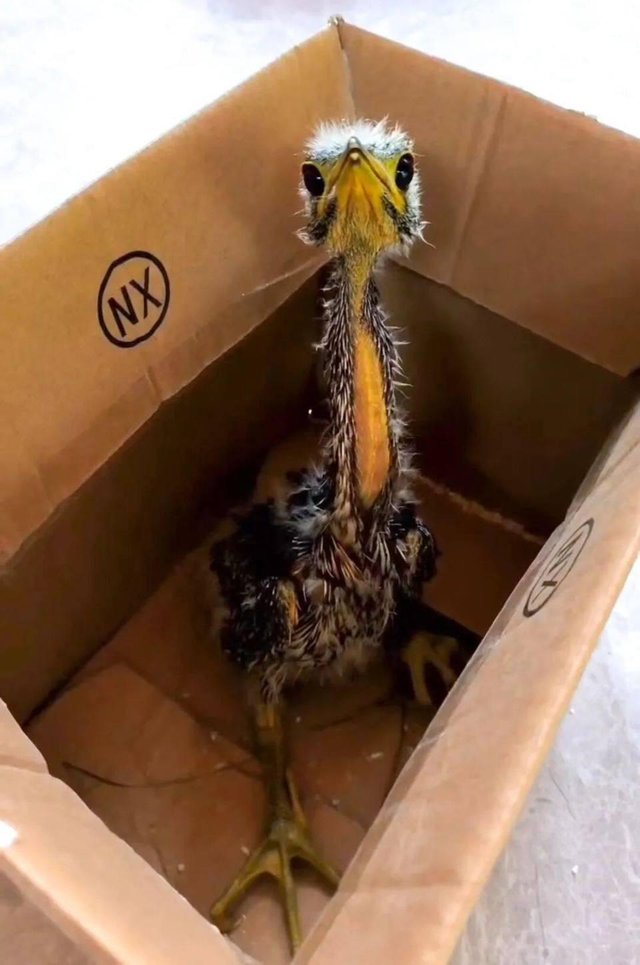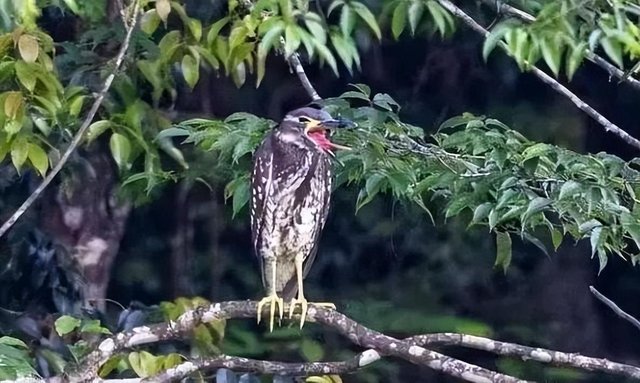When talking about the unique features of Sichuan, the black-and-white, soft giant panda is undoubtedly the first that comes to mind.
However, what many might not expect is that Sichuan's rich and beautiful natural environment has nurtured countless rare and precious species. Recently, an extremely endangered and rare bird was discovered in this land. This bird was once thought to be extinct by the United Nations.
A "Big-Eyed Bird" Appears
The Shibanhe Scenic Area in Weiyuan County, Sichuan, is a well-constructed ecological and tourist spot, with lush forests and shrubs often attracting wild birds. On May 5, 2023, a "big-eyed bird" quietly appeared in the green shrubbery. Its large eyes awkwardly adorned its small head, with a long, thin neck and a weak, emaciated body that looked malnourished.
The bird drooped its head and stared at the world outside the shrubs with its big eyes, seemingly waiting for its mother to return. Soon, a figure appeared at the edge of the shrubbery, and the bird showed great excitement. Unfortunately, it wasn't the bird's mother but a human in uniform. It turned out to be a staff member of the scenic area who had discovered the bird.
The staff member curiously examined the "big-eyed bird." Despite their rich experience, they couldn't immediately identify this bird. Surprisingly, the unusual chick showed no fear of the stranger, calmly observing the staff. It didn't cry or fuss, allowing the staff to place it in a box and take it to the local forestry department.
When the bird arrived at the forestry department, everyone felt that it must be significant. After expert identification, it was confirmed that this peculiar chick was a Hainan Gibbon, a species so rare that even the United Nations had once thought it was extinct.
A Bird More Famous Than the Giant Panda, With Only About a Thousand Left in the Wild
The Hainan Gibbon is unique to China and has a distinctive appearance with deep brown plumage and evenly distributed spots. It has large eyes and a long beak, with a not very graceful posture and a long neck that bends forward.
Hainan Gibbons are inherently low-key and avoid human presence, living in hidden forest areas. When sensing danger, they adopt a stiff posture to "camouflage" as a piece of dead wood, avoiding predators.
Recognized as more famous than the giant panda, the Hainan Gibbon is also a first-class national protected animal. Unlike the giant panda, whose population has significantly increased due to human protection, the Hainan Gibbon remains critically endangered. Its elusive nature makes it difficult for humans to study and protect.
The Hainan Gibbon primarily inhabits dense forests in Zhejiang, Anhui, and Guangxi, preferring areas near water sources. They are extremely picky about their environment, especially water quality. If the water does not meet their standards, they will relocate. Hence, their habitats are often indicators of good water quality.
Although the Hainan Gibbon appears to be a reclusive "bird monk," it is not a "vegetarian." It is highly skilled at hunting, feeding mainly on insects and small fish. It's a nocturnal bird, active at night and resting during the day.
With a body length of about 65 cm, the Hainan Gibbon is a medium-sized wading bird. It prefers solitude and is incredibly alert, often moving away at the slightest disturbance.
Despite its secretive nature, when it comes to parenting, the Hainan Gibbon is very responsible. Both males and females share the duty of raising their young, taking turns to forage and care for the chicks.
Two-Time Appearance of Hainan Gibbons in Weiyuan, Sichuan
Weiyuan County in Sichuan has seen significant ecological improvements, with increasing protection for rare flora and fauna. The rich resources and stable environment have attracted even the reclusive Hainan Gibbon. In 2021, the county had already rescued a lone Hainan Gibbon.
Unexpectedly, Weiyuan County welcomed another appearance of this rare bird. It is possible that the parent birds abandoned the nest due to perceived threats while foraging, leading to the discovery of the weak chick in the shrubbery this time.
The appearance of the Hainan Gibbon chick brings hope to local wildlife protectors, indicating that these rare birds might be surviving in some corner of the forest.
Many intelligent animals prefer to live near human habitats, such as magpies and sparrows, due to the food sources available. In contrast, the Hainan Gibbon avoids humans and prefers remote locations. If the Hainan Gibbon were less secretive, human protection efforts might be more effective in saving this species. Thank you for reading.
